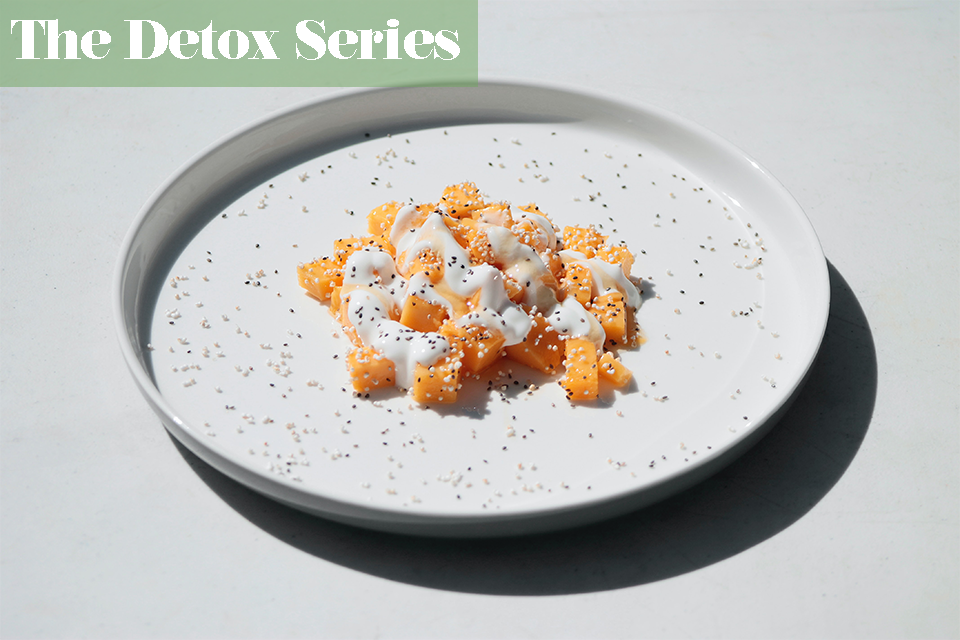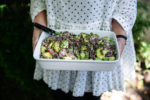Everything You Need to Know About a Low Histamine Diet
Did your doctor or dietitian instruct you to follow a low histamine diet because you’re experiencing specific allergic reactions?
Some foods can trigger your immune system to produce histamine or increase histamine levels, then attack innocent food substances that are supposed to be beneficial for your body!
To keep your histamines from going haywire, follow a low histamine diet to tame all the unwelcomed symptoms of histamine intolerance.
In this article, we’ll uncover the facts behind a low histamine diet, its benefits, whom it is intended for, and what foods are included in this diet. Read on!
Histamines: Friends or Enemies?
From the Greek word histos (tissues), histamine is a chemical from the amine group that is mainly stored in mast cells and basophils.
Historically, histamine was discovered by Sir Henry H. Dale in the early 1900s. The discovery of this biogenic amine landed him a Nobel Prize in Medicine in 1936.
Histamine is not just found in the body; it is also naturally-occurring in foods.
When it comes to histamine, it is like a love-hate relationship. Histamines are beneficial for your health, and at the same time, they can threaten your life!
Histamines play a crucial role in your health, particularly in the immune system, the digestive system, and the neurological system.
The immune system is responsible for distinguishing and eliminating foreign bodies that can potentially harm you.
As people say, “Too much of anything is bad.” This also applies to how histamines work. Over accumulation of histamines in your body can cause histamine intolerance or sensitivity to dietary histamine.
Elevated histamine levels in your system can contribute to severe allergic reactions.
Histamine Intolerance
Histamine intolerance (HIT) refers to the adverse reaction to histamine. Having this condition does not entail that you are sensitive to histamine, but your body has just produced too much of it. Histamines are the primary cause of allergies.
Allergic reactions caused by histamine accumulation include itchy skin, flushing, diarrhea, headache, asthma, rhinoconjunctivitis, hypotension, arrhythmia, and anaphylaxis.
One of the reasons you may be intolerant to histamine is that your gut may have a deficient diamine oxidase (DAO) level, a type of digestive enzyme that breaks down excess histamine in the body.
The Low Histamine Diet
A low histamine diet is recommended for people who are experiencing allergy-like symptoms or who are histamine intolerant.
The intention of low histamine or histamine-free diet is to reduce a person’s intake of histamine-containing foods.
A low histamine diet requires the restriction or elimination of any food, ingredient, or substance that contains high amounts of histamine, which triggers an allergic response.
The Food Allergy Working Group of Deutsche Gesellschaft für Allergie und Klinische Immunologie (DGAKI) recommends a three-step therapeutic approach to help alleviate histamine intolerance:
Step 1: Initial avoidance phase
You will be instructed to completely limit or avoid consuming foods that contain high amounts of histamines for 10 to 14 days.
Step 2: Testing phase
After two weeks, the foods you have avoided will be reintroduced to expand the variety of foods with higher histamine and record any allergic reaction. This phase will also help you identify particular foods that you are potentially allergic to, and it will help you determine a tolerance threshold that will serve as a basis for planning long-term dietary changes.
Step 3: Adjustment phase
The last phase is an individualized dietary adjustment that promotes a high quality of life wherein the patient’s food choices are not too restrictive anymore.
Once you have successfully completed the elimination diet, you will have to establish your threshold level.
In other words, know how much food your body can tolerate before you have an allergy attack.
Start in small quantities and give your body time to recognize and be kinder to the foods it takes in.
Remember, every person with histamine intolerance has different tolerance levels.
A food that is low in histamine does not mean your body can tolerate it well. Know your limits. Be mindful of what you eat. And, always listen to your body.
Benefits of Low Histamine Diet
Following a low histamine diet is one of the most effective ways to manage histamine intolerance symptoms. The benefits of this diet include:
Diagnostic tool for histamine tolerance
A low histamine diet can serve as a tool for medical practitioners to correctly diagnose individuals if they have histamine intolerance.
Improve histamine intolerance symptoms
A low histamine diet helps get histamine intolerance symptoms under control, such as skin itchiness, skin swelling, urticaria, hives, eczema, chronic headaches, and migraines.
Foods Low in Histamine
There is no cure to rid of histamine intolerance for life.
All you have to do is eliminate or lower the consumption of certain foods that trigger histamine intolerance symptoms.
However, a histamine-free diet is unattainable.
Histamines are widely present in different food categories, and it accumulates in high concentrations in specific foods.
The best way to minimize the recurrence of histamine intolerance symptoms is to consume foods that are low in histamine.
A study revealed that lower consumption of histamine could significantly reduce allergy symptoms, and it may even increase diamine oxidase (DAO) levels in the blood.
Fresh foods are deemed to have lower amounts of histamines.
Here is a list of other foods that contain low amounts of histamine:
| FOOD GROUP | FOODS LOW IN HISTAMINE |
| Grains | Amaranth, corn, millet, quinoa, rice, teff, oats, oats. Pasta made from rice, corn, or spelt. |
| Vegetables | Leafy greens: arugula, cabbage, bok choy, leeks, lettuce, turnip, watercress. Others: asparagus, broccoli, brussels sprouts, carrots, cauliflower, garlic, bell peppers, beets, onions, rhubarb, rutabaga, shallot, summer squash, and sweet potato. |
| Fruits | Apples, apricots, plums, pomegranate, coconut, melons, blackberries, blueberries, cherries, peaches, raspberries, or any other fruit except the citrus family or papaya, pineapple, strawberries. |
| Meats | Organic & grass-fed beef, goat, lamb, elk, venison. |
| Fish | Fished & wild-caught; gutted less than half an hour (except sardine, herring, mackerel, and tuna). |
| Others | Fresh herbs, olive oil, freshly popped or homemade popcorn, cooked potatoes. |
Fish and meat may be allowed in a low histamine diet as long as it is guaranteed fresh. Histamine levels in these products are higher if it lacks freshness or if it is in poor quality due to unhygienic production.
Foods High in Histamine
Generally, foods that contain higher amounts of histamines are found in aged or fermented products.
Fermented foods are identified to have the highest levels of histamine. The longer it is aged, the more histamine it produces from amino acids.
The histamine levels can vary even within the same food product depending on several factors, such as maturity (aging), storage, and food process.
Here’s a list of foods that contain high amounts of histamine:
| FOOD GROUP | FOODS HIGH IN HISTAMINE |
| Aged cheeses | Gouda, camembert, cheddar, Emmental, swiss, parmesan. |
| Alcoholic beverages | White wine, red wine, beer, champagne. |
| Condiments / seasonings | Soy sauce, tamari, coconut aminos, liquid aminos, ketchup, vinegar, curry, monosodium glutamate, mustard, vanilla, cinnamon, nutmeg, anise. |
| Fruits | Generally, any overripe fruit or dried fruits. Citrus fruits. |
| Fermented or aged meats | Canned meats or fish, deli meats, cured meats, hotdogs. |
| Dairy products | Milk, sour cream, buttermilk, yogurt, kefir, cottage cheese, ricotta cheese. |
| Fermented vegetables | Sauerkraut, pickles, kimchi, miso, natto. |
| Fishes | Mackerel, herring, tuna, sardine. |
| Fermented beverages | Kombucha (fermented sweetened tea). |
| Meat | Fermented sausage, fermented ham. Cold cuts, such as chorizo, sausage, salami, fuet, black pudding, bacon, frankfurt. |
| Pickled products | Pickled vegetables. |
| Other seafood products | Sepia, squid, octopus. Smoked, salted, or canned seafood. |
| Spoiled food or leftovers | Overripe, older, or non-hygienic foods. |
| Tea | Green tea, black tea, white tea. |
| Yeast-containing products | Fermented bread. |
Histamines are also found in some plant-based foods such as:
- Avocado
- Eggplant
- Tomatoes
- Spinach
- Pineapple
Foods found to have histamine-releasing capacities:
- Additives
- Chocolate
- Citrus fruits
- Crustaceans
- Egg white, especially raw or undercooked
- Fish
- Nuts
- Papaya
- Peanuts
- Pineapple
- Pork
- Spices
- Spinach
- Strawberries
- Tomatoes
Does the cooking method matter?
Yes, it does.
In fact, research states that boiling or blanching your food can help decrease the histamine level in it through dilution. This makes it helpful for histamine-sensitive individuals to control the effect of histamine.
On the other hand, frying and grilling can increase the histamine levels of foods, such as fishery products and processed marine products, meat and processed meat, carrots and laver seaweed, fermented pastes, and dairy products.
Disadvantages of Low Histamine Diet
Although a low histamine diet can help manage symptoms of histamine intolerance, it also has its downsides such as:
It can lead to malnutrition
A low histamine diet is not ideal for the long-term. This diet is very restrictive as it limits your food choices, depriving you of getting other essential nutrients your body needs to get.
Bear in mind that a low histamine diet is a therapeutic diet that should be ideally planned by a licensed dietitian to reduce the symptoms of histamine intolerance and, at the same time, to ensure that your health is well-nourished as well.
There is a lack of evidence that supports the long-term application of a low-histamine diet in improving the quality of life.
It’s a less-appealing diet
As there are only a few foods to choose from the list, this kind of diet takes the pleasure out of eating. Besides the fact that a low histamine diet takes away a good number of nutritious foods, expect that your food flavors are also affected as certain condiments or flavorings are also eliminated in this diet.
Final Thought
A low-histamine diet or histamine intolerance diet serves as a diagnostic tool and dietary management for histamine intolerance (HIT). It is wise to see your doctor first to confirm whether or not you have histamine intolerance.
If your body’s overproduction of histamine is the culprit, your doctor or dietitian will provide appropriate dietary management strategies to reduce your intake of foods that can potentially elevate histamine levels in the body.
Eat more fresh foods or low histamine foods. See the list of foods presented above as your reference.
Eliminate foods that contain high histamine levels, especially fermented or highly processed foods.
This diet is not ideal for long-term use, as many nutritious foods were eliminated from this diet.
Follow our latest scoops on beauty and wellness!
Sign up for our newsletter below!
References Alstadhaug, K. B. (2014). Histamine in migraine and brain. Headache, 54(2), 246–259. Branco, A. C. C. C., Yoshikawa, F. S. Y., Pietrobon, A. J., & Sato, M. N. (2018). Role of Histamine in Modulating the Immune Response and Inflammation. Mediators of Inflammation, 2018. httpss://doi.org/10.11Comas-Basté, O., Sánchez-Pérez, S., Veciana-Nogués, M. T., Latorre-Moratalla, M., & Vidal-Carou, M. D. C. (2020). Histamine intolerance: The current state of the art. Biomolecules, 10(8), 1–26. Comas-Basté, O., Sánchez-Pérez, S., Veciana-Nogués, M. T., Latorre-Moratalla, M., & Vidal-Carou, M. D. C. (2020). Histamine intolerance: The current state of the art. Biomolecules, 10(8), 1–26. Deacock, S. J. (2008). An approach to the patient with urticaria. Clinical and Experimental Immunology, 153(2), 151–161. Kohn, J. B. (2014). Is There a Diet for Histamine Intolerance? Journal of the Academy of Nutrition and Dietetics, 114(11), 1860. Lackner, S., Malcher, V., Enko, D. et al. Histamine-reduced diet and increase of serum diamine oxidase correlating to diet compliance in histamine intolerance. Eur J Clin Nutr 73, 102–104 (2019). Maintz, L., & Novak, N. (2007). Histamine and histamine intolerance. American Journal of Clinical Nutrition, 85(5), 1185–1196. Park, S. J., Park, S. H., Chung, H., Lee, J., Hyun, T., & Chun, J. (2017). Effects of different cooking methods on folate retention in selected mushrooms. Korean Journal of Food Preservation, 24(8), 1103–1112. Pino-Ángeles, A., Reyes-Palomares, A., Melgarejo, E., & Sánchez-Jiménez, F. (2012). Histamine: An undercover agent in multiple rare diseases? Journal of Cellular and Molecular Medicine, 16(9), 1947–1960. Quispe-Tintaya, W. (2017). 乳鼠心肌提取 HHS Public Access. Physiology & Behavior, 176(3), 139–148. Reese, I. (2018). Nutrition therapy for adverse reactions to histamine in food and beverages. Allergologie Select, 2(01), 56–61. Reese, I., Ballmer-Weber, B., Beyer, K., Fuchs, T., Kleine-Tebbe, J., Klimek, L., Lepp, U., Niggemann, B., Saloga, J., Schäfer, C., Werfel, T., Zuberbier, T., & Worm, M. (2017). Leitlinie zum vorgehen bei verdacht auf unverträglichkeit gegenüber oral aufgenommenem histamin: Leitlinie der deutschen gesellschaft für allergologie und klinische immunologie (DGAKI), der gesellschaft für pädiatrische allergologie und umweltmedizin (GPA. Allergo Journal, 26(2), 51–61. Sánchez-Pérez, S., Comas-Basté, O., Rabell-González, J., Veciana-Nogués, M. T., Latorre-Moratalla, M. L., & Vidal-Carou, M. C. (2018). Biogenic amines in plant-origin foods: Are they frequently underestimated in low-histamine diets? Foods, 7(12), 1–17. Shim, W. S., & Oh, U. (2008). Histamine-induced itch and its relationship with pain. Molecular Pain, 4, 1–6. White, M. V. (1990). The role of histamine in allergic diseases. The Journal of Allergy and Clinical Immunology, 86(4 PART 2), 599–605.







